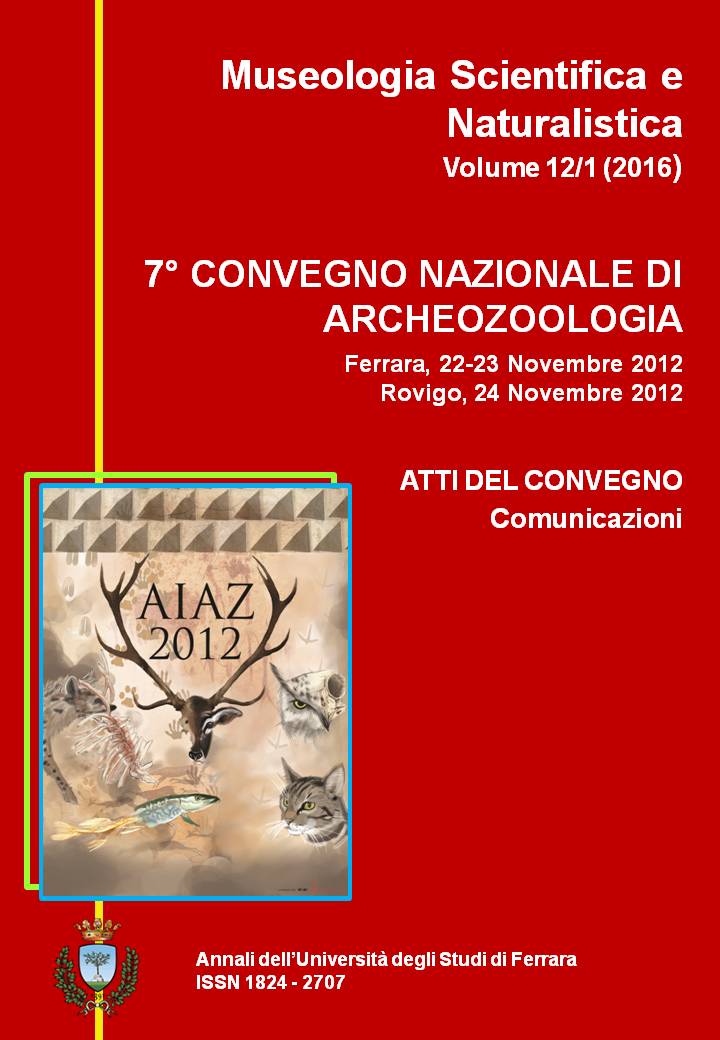La descrizione dei primati non umani e di altri mammiferi dell’Africa occidentale nelle fonti letterarie Portoghesi dei secoli XV e XVI
DOI:
https://doi.org/10.15160/1824-2707/1330Abstract
Riassunto - L’esplorazione delle coste africane nei secoli XV e XVI portò all’attenzione del mondo occidentale molte informazioni di prima mano sulle recenti terre scoperte. Anche gli incontri con gli animali selvatici furono accuratamente annotati da navigatori ed esploratori. Malgrado la percezione del mondo naturale fosse ovviamente influenzata da pregiudizi culturali e religiosi, è possibile incontrare accurate descrizioni relative alla morfologia e al comportamento sia di primati non umani sia di altri mammiferi africani. Questo lavoro presenta i risultati di un’analisi condotta sulle cronache di viaggio portoghesi nell’Età delle Scoperte contenenti riferimenti a questi animali. In particolare si osserva come le descrizioni dello scimpanzé occidentale (Pan troglodytes verus) siano molto precise e meticolose. Frequentemente essi sono paragonati agli esseri umani (dal punto di vista cognitivo, morfologico e dal punto di vista comportamentale) o descritti mentre svolgono attività umane. Da queste testimonianze si evincono inoltre informazioni sulla densità di popolazione, distribuzione e comportamento di altri mammiferi terrestri quali l’elefante africano (Loxodonta africana) o l’ippopotamo (Hippopotamus amphibius). Queste descrizioni più realistiche e molto diverse dai bestiari medievali, ebbero un forte impatto sulla zoologia rinascimentale.
Summary - How non-human primates and other terrestrial West African mammals were described in the Portuguese literary sources of the 15th and 16th centuries.
In the 15th and 16th centuries European exploration around the coast of Africa brought new first-hand information about the newly discovered lands to the attention of the western world. Encounters with new and wild animals were frequently reported by travellers and explorers, and although Europeans’ perceptions were strongly influenced by cultural and religious prejudices, it is possible to find very interesting and accurate descriptions of non-human primates’ and other mammals’ morphology and behaviour. The current work presents the results of a review of many Portuguese travel chronicles of the Age of Discovery, which contain reports of sightings of these mammals. Specifically, the reports about West Africa chimpanzees (Pan troglodytes verus) from this period can be considered the product of precise and meticulous observations regarding this primate. In these descriptions, chimpanzees are often compared with human beings (from both cognitive, morphological and behavioural points of view) and/or described as performing human tasks. Reports on the population levels, distribution and behavioural habits of other terrestrial mammals can also be found, including that of elephants (Loxodonta africana) and hippopotami (Hippopotamus amphibius). These descriptions are very realistic and greatly differ from the imagery found in medieval bestiaries and made an important impact on the zoological works of the Renaissance naturalists.



